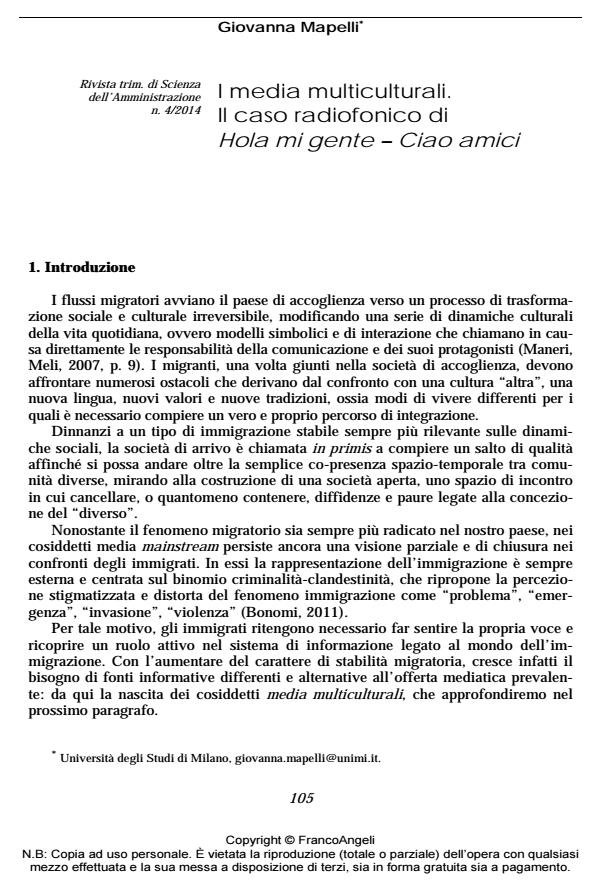Multicultural Media: The radio case study of Hola mi gente – Ciao amici
Journal title RIVISTA TRIMESTRALE DI SCIENZA DELL’AMMINISTRAZIONE
Author/s Giovanna Mapelli
Publishing Year 2015 Issue 2014/4
Language Italian Pages 14 P. 105-118 File size 72 KB
DOI 10.3280/SA2014-004009
DOI is like a bar code for intellectual property: to have more infomation
click here
Below, you can see the article first page
If you want to buy this article in PDF format, you can do it, following the instructions to buy download credits

FrancoAngeli is member of Publishers International Linking Association, Inc (PILA), a not-for-profit association which run the CrossRef service enabling links to and from online scholarly content.
Multicultural radio projects and, in this specific case, Hola mi gente - Ciao amici, can be regarded as a meaningful window on the migration world. They give visibility to a culture and a language that migrants would risk losing in the new social context, while at the same time they are a medium to learn Italian. These programs not only represent an important source of information but above all constitute a first step towards social inclusion. For migrants they are an indispensable source for the reconstruction and redefinition of their identities in the host country. From a linguistic point of view the author observes, on the one hand, the informal tone and the strong involvement of protagonists; on the other side, she detects the presence of different types of hybrid terms (borrowing, interference and code switching) that would seem to prove the linguistic-cultural processes of integration of immigrants in Italy and the intentions to engage Italians in their projects.
Keywords: Immigration, multicultural media, languages in contact
Giovanna Mapelli, I media multiculturali. Il caso radiofonico di Hola mi gente - Ciao amici in "RIVISTA TRIMESTRALE DI SCIENZA DELL’AMMINISTRAZIONE" 4/2014, pp 105-118, DOI: 10.3280/SA2014-004009